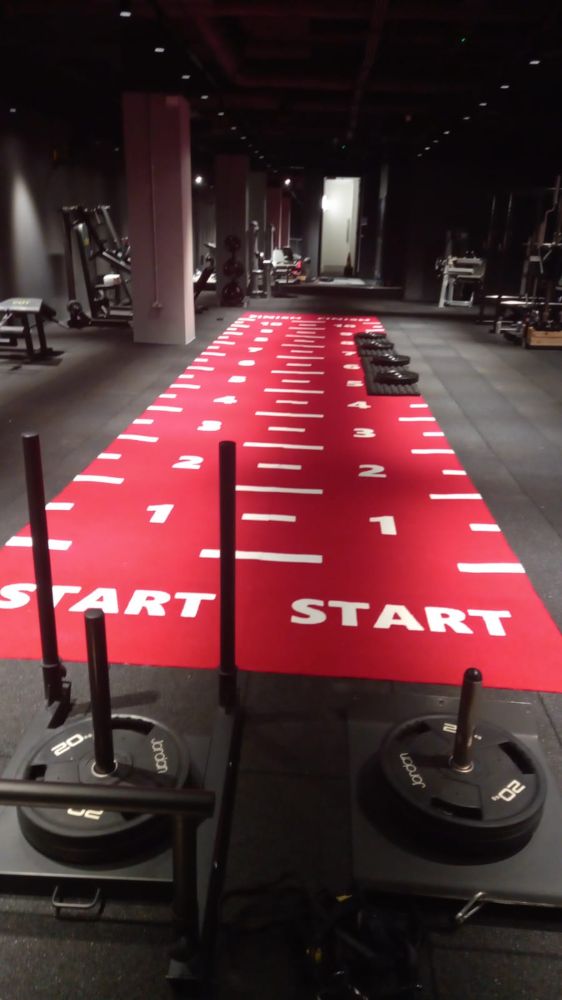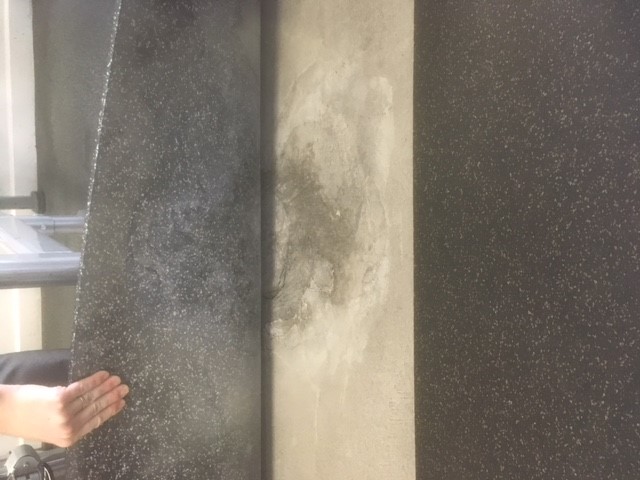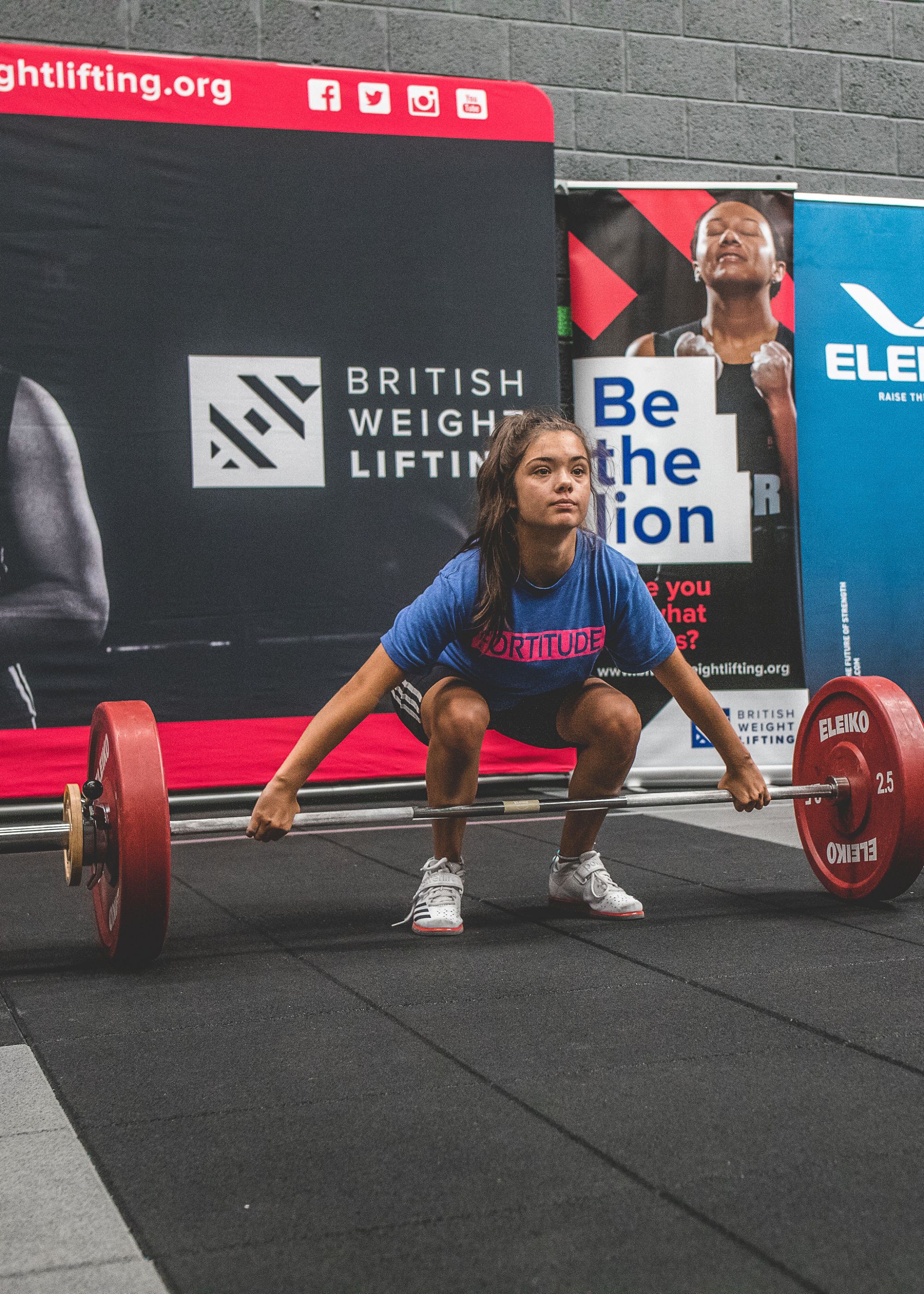Strength & Conditioning (S&C) Technical Advice Guidance

Strength & Conditioning - Flooring Specification
There is no doubt about it, Strength & Conditioning training is big business, an industry within an industry. During my time working with Team GB, I learned that within elite levels of sport, performance is measured in points of a percent increments, such is the fine balance between goal success and failure. A medal position or not!
Many of the issues surrounding flooring complaints and surface failures are similar to other areas of the gym environment and, the specification process that we follow is exactly the same.
This process is broken down in to three key stages, namely TECHNICAL Criteria, DESIGN Consideration& INSTALL Method. Cut corners, costs and considerations and you will run the risk of additional expense, downtime disruption and performance impact........possibly even injury to someone.
The information below is available in a technical guidance sheet - contact us for a copy.
Firstly, when considering a flooring specification, we always begin with TECHNICAL Criteria. What is the space being used for? This can actually be numerous applications within an S&C space and if the room is of limited size then we have a compromise space that needs to fulfil a diverse range of activities by a wide range of users and coaches.
Take free weights flooring. Tile or rolls? For me, it doesn't matter. What matters is that we follow the rule of thumb "The rolls or tiles used in a free weights area should equate to 10 mm of thickness for every 10 kg's increment of dumbbell". If your maximum dumbbell is 40 kg, then you will need 40 mm of rubber tile or roll. Simple! This will ensure we protect the equipment being used, the floor and the sub floor from expensive damage (more on sub floors later).

Damage to sub floor due to 10mm rubber being used with 40Kg dumbbells.
Functional training is complimentary to S&C and as such we need to ensure the Technical Criteria is met. Unlike the free weights, a functional space needs to offer the athlete 'bio-mechanical response'. This could be a single, or often combined responses: -
% Force Reduction - Vertical Deformation - Cohesion of Friction - Restitution of Energy - Foot Traction
Why is a 'bio-mechanical response' important? Consider landing on a hard concrete floor offering no % force reduction from a 0.76m Plyo box repeatedly. This could lead to an RSI, as we often witness with road runners. Changing direction quickly on a floor without adequate grip during reaction training, may result in a slip. Slips tend to result in muscle strains and tear injuries. Too much grip, the risk then becomes one of ankle supination or a knee twist resulting in sprain injuries. An athlete exerting a huge downward force pulling a sledge on a track will need some protection from the floor, should they go down. A suitable bio-mechanical response will reduce the risk of these types of injury.
As we move through the spaces and satisfy the Technical Criteria, we can then move on to the next stage of DESIGN consideration.

With DESIGN consideration we look at the building, it's surroundings, size and shape of room, height of ceilings, natural light, corporate identity and brand retention. Do we want the whole floor to be set at one level? Do we want coloured 'zones', do we need to reflect a brand identity are we looking to finish with a transition detail from the free weight floor to the functional / sports floor? Floor boxes? skirting boards? floor markings? Logos? DESIGN is in the detail.
Universities now are vying for business from students and this customer base has much higher expectations in facilities for sport, fitness (as well as night life) than ten years ago and so the whole experience needs to reflect the user profile and their expectations. The floor design can link in to the decoration, lighting and even AV.
So, we have the right product for the space in the right design and now we can look at the INSTALLATION method. Firstly, this usually reflects the construction constraints of the building and in particular, the sub floor. It could be a concrete screed, wooden undercarriage, access floor, block and beam as well as other sub floor construction materials. In respect of flooring installation, we work to BS8203 in the UK. This is the British Standard for sub floors for resilient floor coverings. It requires that the sub floor is: - Flat, Sound, Hard, Clean and Dry.

Flatness does not refer to level but to surface regularity. A room that is 200 mm higher at one end than the other may be perfectly acceptable to lay a floor on so long as it is flat. Sound simply means that the sub floor does not have cracks in it. A hard sub floor is essential and if I hit the concrete with a hammer and it indents or smashes, guess what? It isn’t hard enough! A clean sub floor means free from contaminants. Dust, rubble, old adhesive or carpet residues, paint, oil to name a few. The biggest reason for floor failure in the UK is sub floor moisture. Particularly in very old facilities and newly constructed buildings. Old buildings often have no damp proof course (pre-1960’s) and newly constructed sub floors take one day for every 1 mm of concrete to dry out. Sub floor moisture should be less than 75% rH (relative humidity) and, if there is moisture present we can get around the problem with isolators and modern fit methods.
Technical Advice Guidance:- Strength & Conditioning (S&C) Training Flooring
Definition: Strength & Conditioning Areas Strength and Conditioning (S&C) is an important aspect of athlete development through physical and physiological improvement. The primary reason for this undertaking is to reduce the risk of injury and the secondary factors are based around performance enhancement for the principal sport or activities to which the athlete participates in. This done by undertaking various exercises that will help improve the key attributes of a particular sport e.g. Strength, Power, Speed, Endurance, Agility, Flexibility, Reaction and so on.
General Facility Guidance: -
1. Floor Sub Floor: Weight Lifting sub floor should be Hard, Sound, Clean, Flat and dry <75%rH as stipulated in BS8203.
2. Floor Platforms: Wooden insert platforms can be provided as a viable piece of equipment for Olympic Lifting. Colour coded rubber tiles can provide demarcation of a lifting area.
3. Floor General: Rubber tiles or rolls is a good option for the entire gym floor with specialist flooring installed where required.
4. Floor Space: Ensure a good flow with a minimum 1m space between equipment and 2m ‘clearance’ behind treadmills.
5. Floor Free Weights: follow ratio of 1mm:1kg of dumbbell used e.g. 20Kg Dumbbell = 20mm rubber, 40Kg Dumbbell = 40mm rubber and so on.
6. Floor Sledge – Plyo- Sprint Turf: Texturized polypropylene track set on an elastic layer. The elastic layer provides bio-mechanical response and should be 5mm15mm depending on levels of intensity (Min width 1.2m)
7. Floor Plyo Sprint Track: 10mm+4mm-10mm sandwich system. 10mm elastic layer with a 4mm-10mm polymeric top layer, line marked as required (min width 1.2M)
8. Floor CV Areas: Require no bio mechanical criteria and consideration should be given to traffic volume and ease of maintenance. Also, treadmills can cause airborne and impact noise (see Environmental #16). Compact rubber, Vinyl, Poured Systems, Engineered Boards.
9. Floor Fixed Resistance: Require no bio mechanical criteria and consideration should be given to traffic volume and ease of maintenance. Also fixed resistance machines can cause airborne and impact noise (see Environmental #16). Compact rubber, Vinyl, Poured Systems, Engineered Boards.
10. Floor Athlete Assessment/ Lab: Altro safety flooring similar to that used in hospitals, dentistry and so on will provide a hygienic, easy to clean surface for athlete assessments, blood sampling and drug testing.
11. Ceiling Ceilings should be no lower than 3.0m from finished floor levels/ platforms. Lower ceilings may limit certain equipment and /or exercises e.g. Jumping on off Plyo boxes, chin up bars and so on.
12. Lighting Glare: From windows or roof lights should be controlled. Adjustable blinds to filter light and provide privacy should be considered.
13. Lighting Overall Gym: 200-300 lux with a good uniformity ratio. Free Weight / Functional / S&C areas require an overall minimum average of 300Lux
14. Lighting General: Consideration should be given to LED or other low energy fittings to minimise power consumption and heat output.
15. Environmental Temperature: Control should be managed via an air handling unit or other quick response method not under floor heating
16. Environmental Air Flow: Should be good and slow and quick ventilation access should be available at all times.
17. Environmental Welfare: Access to fresh water and welfare facilities should be within easy access of the training area.
18. Environmental Noise: Consideration should be given to airborne and impact noise generated from Weight Lifting activities. Arriving / leaving the building. Coaching and talking. Music. Impact from weights being dropped. A noise impact assessment is recommended where there may be impact on neighbours or local residents.
For more information or a free consultation call now 07399 518833 or enquire via 'send us a message' on the web page